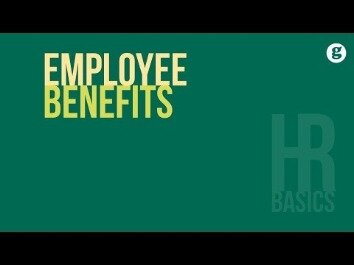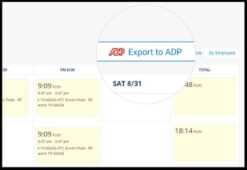Cafeteria Plans

Content

Cafeteria plan benefits come in various forms, including health and life insurance, dependent care and adoption assistance, accident insurance and health savings accounts. Each benefit has its own tax implication; not all benefits are excluded from the same taxes. For example, no federal income tax, Social Security tax or Medicare tax comes out of your health insurance premiums. However, your life insurance premiums on coverage over $50,000 are subject to Social Security and Medicare taxes, but not federal income tax. Boxes 1, 3 and 5 of your W-2 respectively stand for your federal, Social Security and Medicare taxable wages. Your cafeteria plan premiums aren’t included in the taxable wages of those boxes if they aren’t subject to the tax. Both a cafeteria plan and a qualified small employer health reimbursement account are kinds of employer-sponsored health care that can be provided on a pretax basis.

In addition to the tax benefits to employees who will have less taxable gross income under a POP, employers also benefit by saving payroll taxes on the employee salary reductions. Premium Only Plan A POP allows you and your employees to pay insurance premiums with pre-tax dollars. Together with group health insurance, a POP reduces taxable income and results in a reduction in the amount used to determine your company’s FICA and FUTA payroll taxes and any applicable state taxes. An FSA allows employees to pay for qualified out-of-pocket medical expenses on a pre-tax basis. If the FSA is the only benefit provided, employees may use the account to cover health insurance premiums. An example of the taxable benefit option could be allowing employees to take the monthly amount as part of their salary rather than applying it towards the benefit plan.
Who Cannot Participate In A Section 125 Plan?
A POP plan is the simplest type of section 125 plan and is easy to roll out and maintain. Your employer may report your cafeteria plan deductions in Box 14, which is labeled “Other.” It might use the code “Section 125” or “Café 125,” and then state your pretax payments. This data is optional and can clear up any confusion you have about the amount in Box 1. For example, the year-to-date gross amount on your last pay stub for the year shows all of your wages for the year, including your pretax payments. If you add the amount in Box 14 to the amount in Box 1, it should equal the amount shown on your pay stub. Your employer can show other types of payments and wages in Box 14, such as union dues, nontaxable income, educational assistance payments and certain contributions to a pension plan. The employee advantages of enrolling in cafeteria plans are simple.
Is s125 and sec125 the same thing?
An employer’s health insurance plan must meet the criteria of Section 125 of the IRS code for pretax premium eligibility. Section 125 plans are better known as cafeteria plans, since they offer employees the ability to choose just some of their benefits.
The primary advantage to employees is the range of healthcare options that allows them to use Section 125 money to fit their needs. Typically, they can use the pre-tax money to pay for health insurance premiums, retirement deposits, or other benefit options. If they don’t want any of the offered benefits, they may be able to choose alternatives; options may include cash or other taxable benefits, like supplemental life or disability insurance.
On Aug. 6, 2007, the IRS issued proposed regulations governing Section 125 plans Ñ aka cafeteria plans Ñ reflecting several changes occurring since 1997, as well as incorporating new guidance. Employees can be given the opportunity to receive medical, dental, vision and other qualified benefits and contribute to the cost on a pre-tax basis in lieu of receiving taxable wages. Federal law requires that employers providing group health insurance must report the value of the coverage in Box 12 of employees’ W-2, under Code DD. This amount includes the total paid by the employer and its employees.
Plan Amendments
It may, however, choose to report certain benefits on your W-2 and code them as Café 125. In some cases, cafeteria plan reporting on your W-2 is mandatory. If you offer your employees pretax medical insurance, you do so through a Section 125, or cafeteria, plan, which exempts their premiums from specific taxes. For some reason, you may need to refund an employee’s medical contributions. This may happen, for instance, if she stopped her medical coverage, but you did not stop her deductions in the payroll system. When you refund a pretax deduction, the money loses its tax advantage.
Only specific types of coverage must be reported; others aren’t required or are optional. For example, your employer must report the cost of major medical, but your contributions to a health flexible spending account aren’t reportable. The data in Box 12 is for informational purposes only, so employees know the cost of their health coverage. Your employer may also use Box 12 to report certain retirement plan contributions and nontaxable moving expenses, under the required codes. IRS code Section 125, allows employers to adopt a plan in which employees, through salary reduction, can pay for eligible benefits and medical or dependent care expenses on a pre-taxed basis.

A QSEHRA is used to provide a savings account that businesses with 50 employees and fewer can give to their employees to purchase health benefits whereas a cafeteria plan may provide health insurance as part of the plan. Employers with more than 50 employees must provide health insurance.
Most cafeteria plans are not subject to Medicare taxes, and by allowing employees to defer income to these programs, employers generally pay less in payroll taxes. Cafeteria plans also can build employees’ loyalty within the company by saving them money and offering benefits they could not otherwise afford.
Simple Cafeteria Plans
A section 125 cafeteria plan lets a business owner offer affordable employee benefits while giving themselves a payroll tax break. Health benefit plans allow employers and employees to set aside funds before they’re taxed to help employees pay for qualified medical expenses in the absence of coverage, or not covered by their health plan. A Section 125 premium-only-plan , is a cafeteria plan which allows employees to pay their health insurance premiums with tax-free dollars.
- Each benefit has its own tax implication; not all benefits are excluded from the same taxes.
- Cafeteria plan benefits come in various forms, including health and life insurance, dependent care and adoption assistance, accident insurance and health savings accounts.
- However, your life insurance premiums on coverage over $50,000 are subject to Social Security and Medicare taxes, but not federal income tax.
- For example, no federal income tax, Social Security tax or Medicare tax comes out of your health insurance premiums.
Help reduce your FICA, federal, and state and local taxes for your company and your employees by combining a section 125 premium only plan and flexible spending account with your company’sgroup health insurance. At Paychex, we handle much of the work required to start and manage section 125 plans so you can enjoy the benefits. Some smaller employers use cash bonuses and incentives to attract and retain employees when a cafeteria plan isn’t in the budget. Some small businesses believe that the ACA replaced how employers offer pretax health insurance benefits, but that’s not true. In addition, depending on the size of your company and where you do business, there may be state-specific requirements affecting your cafeteria plans. A cafeteria plan is a pretax benefits plan that meets the specific requirements of section 125 of the Internal Revenue Code of the IRS.
Employers can choose to set up “cafeteria plans” under section 125 of the Internal Revenue Code for a variety of reasons. These cafeteria plans allow employees to set aside pre-tax income for certain employer-offered benefits. Benefits provided by plans covered under section 125 include adoption and dependent care assistance, health insurance, 401k and group term life insurance policies. They are called cafeteria plans because employees are given a list of benefits to choose from, similar to a cafeteria-style menu. A Section 125 Cafeteria Plan is an employer-sponsored benefits plan that lets employees pay for certain qualified medical expenses – such as health insurance premiums – on a pre-tax basis.
With a Section 125 Cafeteria Plan, however, the employer may choose in this situation to offer the cost of the benefits as cash. The employee may use the money towards another benefit; though, if the employee receives cash, that money is taxed. With a POP, employers do not have to pay FICA/FUTA taxes (~7.65%) on dollars that employees use toward the cost of their individual health insurance premiums. Zenefits is a benefits insurance provider that provides HRIS software and a full range of section 125-compliant health insurance like medical coverage, HSAs and FSAs. It also offers HR support and can manage payroll if you prefer an all-in-one solution.
Effectively, the employee pays for out-of-pocket expenses that aren’t covered by insurance with dollars set aside in an account. If the FSA is the only benefit provided, it can also be used to reimburse employees for money they spend on health insurance premiums.
With traditional company-sponsored healthcare insurance, the employer generally pays part of each employee’s premiums. If an employee opts out of the plan, he or she does not receive compensation for the amount their premiums would have cost.
Traditionally, POP plans have been used in combination with employer-sponsored group health insurance plans. However, employees can also use POP plans to pay individual health insurance premiums with tax-free dollars.
This is why we recommend working with a licensed benefits provider, be it a payroll provider like Gusto, a PEO like ADP Total Source, or an insurance company. Under a cafeteria, or Section 125, plan, you pay for your employer-sponsored benefits with pretax money. Your employer deducts your payments from your wages before withholding certain taxes. Your employer doesn’t include your pretax payments in your taxable wages on your annual W-2.

Having Cafe 125 reported on your W-2 does not change the way you prepare and file your tax return. The money deferred to pretax plans should already be subtracted from the total amount of your wages reported in box 1 on your W-2. You should verify that this information is reported correctly before filing your tax return. If you find a discrepancy on Form W-2, you should contact your employer immediately to have it corrected. Also, remember that these benefits are paid for with pre-tax dollars so they are not eligible to be used as a deduction on your return. For example, health insurance is a common benefit offered by these plans, but you cannot also use these costs as a medical deduction on Schedule A if you paid for them through your cafeteria plan. Offering cafeteria plans to employees can save money for employers.
Because you have reduced payroll taxes, your cost to set up the plan is offset. These taxes and compliance elements can be taken care of via payroll software if you feel able to manage the benefits offerings yourself. An FSA allows an employee to pay for certain medical expenses on a pretax basis.
HR and benefits start at $9 per month per employee, plus a $40 monthly service fee. Cafeteria plans can cost as little as a few dollars a month to thousands of dollars a year per employee, depending on how much you, the employee want to contribute. Money to set up and provide benefits through your cafeteria plan comes from two sources ― the business and the employees. The employer may or may not choose to contribute funds to each employee’s insurance premium.
Income allotted to cafeteria plans is taken directly from an employee’s paycheck before taxes are taken out. These pre-tax contributions can save the employee hundreds—possibly even thousands—of dollars in income taxes and Social Security and Medicare taxes over the course of a year. Employees also have the advantage of choosing which programs to enroll in and which to decline to get the specific benefits that are most important to them.


